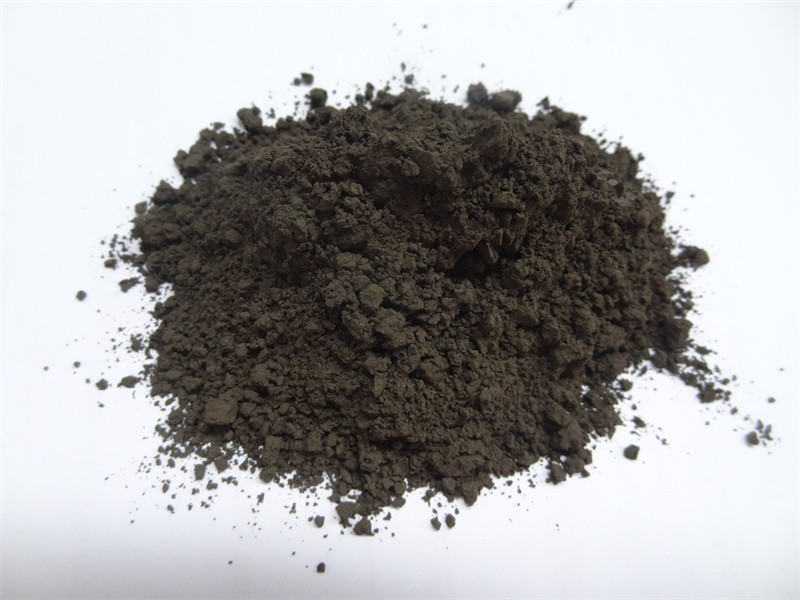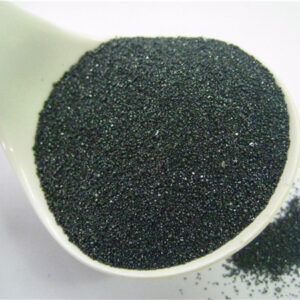The role of chromite flour in our daily life
Chromite flour is finely powdered chromite, which is obtained by grinding chromite sand in a mill. It is mainly produced in South Africa. While it has many applications that rely on its refractory properties, one of its main uses is in the field of ceramics as a pigment and glaze. It is also valued for its coloring ability in glassmaking, providing a pleasing green hue in everyday situations. It is the main ore of chromium metal. Chromite flour has been used intentionally as a pigment since the 19th century.
How is chromite flour used as a ceramic pigment?
With recent architectural and interior design styles moving in the direction of providing maximum choice to the end consumer, all types of wall coverings must have a set of colors to choose from. Tiles, bricks and paving blocks are no exception. The pigment is added during the manufacturing process.
Chromite flour has long been associated with brown pigments for ceramics, usually mixed with zinc-iron chromates, due to the specific crystal positions occupied by these chromophores in the chromite flour. These colors are produced by a mixture of zinc, chromium and iron oxides, which occupy tetrahedral, octahedral and interstitial positions of spinel respectively, when calcined at temperatures exceeding 1,000°C. Crucially, chromite flour is stable above this temperature, which is important because all ceramics are fired to some degree.
For example, taking chromite flour and mixing it with iron oxide in equal proportions will give you a pigment that will color a tile black after firing at 1,200°C. Mixing limonite (hydrated iron oxide) with chromium powder in a 3:1 ratio (in favor of chromium) will produce a traditional brown color – both colors make up just 3% by weight of the entire tile. Increasing the ratio of limonite to chromite flour to 1:1 will produce a ceramic with a particular hue of “chocolate brown” after firing. In the black pigment example, further cost savings can be achieved by using waste hematite as the source of iron oxide.
When chromite is used with zinc and aluminum oxide, a pink color can be obtained; at low temperatures, with antimony and titanium oxides, chromite takes on a yellow-orange hue. Using pure chromite can give you a classic green pigment (similar to that found when chromite is used to color glass), but care needs to be taken to avoid reactions with other metals present. If tin is present, a pink colour may form, and if zinc is present in large quantities, a Tibetan brown pigment may result. The presence of manganese with chromite flour results in colours that vary between red and green, depending on the concentration of manganese.
Grey pigments, especially those prevalent in bricks and pavers, can be easily obtained using chromite. It is also heat resistant when used in roof tiles. By varying the powder size, shades between light grey and almost black can also be obtained, with the base content of chromite in ceramics being as high as 10%. Generally, most pigment applications have a chromite particle size of around 45 microns or 325 mesh.
How is chromite flour used in ceramic glazes?
Glazes are applied after the manufacturing process compared to pigments, and behave more similarly to chromite as a glass colourant. Chromite materials have been found in ceramic glazes dating back to the Late Bronze Age, providing soft grey glazes along with other materials. In some cases, chromite in glazes can act as nucleation sites for the crystallization of other components dissolved in the glaze; potentially producing glazes with a metallic and/or lustrous appearance.
Chromite flour, when acting alone, gives the glaze its common green color, as in glass. Adding more iron oxide will cause the glaze to turn green-brown. As with ceramic pigments, zinc-iron chromate mixtures give the glaze a brown color. If the lead content is high, the color will turn to a lighter yellow, and in the absence of lead, the color is close to black. Even if the chromite content is high, the presence of lead oxide compounds will affect the brightness of the glaze.
Chromite should be considered different from chromium oxide – the latter does not contain iron and can be combined with other metals to form pink and purple glazes.
Through the physical grinding process, we can further process chromite flour from chrome sand. The particle size is determined according to the specific requirements of the intended use, such as glassware, paint factories, ceramics, foundries and automobiles. At present, the particle sizes that can be produced by Haixu Abrasive Factory are 200 mesh 325 mesh 400 mesh 500 mesh 600 mesh 800 mesh 1000 mesh 1200 mesh 1500 mesh 2000 mesh 2500 mesh.
Chromite flour is also used as a colorant for ceramics (enamel and frit), production of refractory materials, refractory cement, foundry coatings (cast steel/cast iron), precision casting, etc.





















